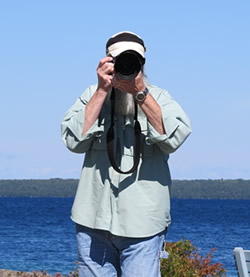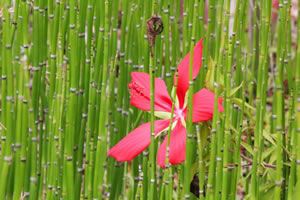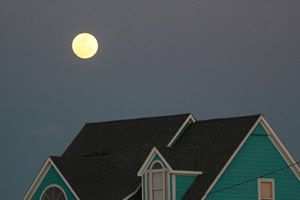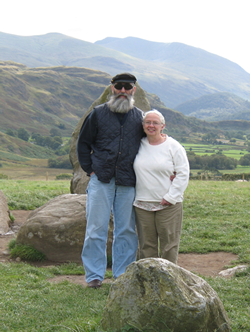Miksang Photography by Peter Welte
Peter Welte’s “dots in space” on display for all to view
 Peter Welte, late husband of BSMC teacher and Council member Marion Buckley, loved taking pictures.
Peter Welte, late husband of BSMC teacher and Council member Marion Buckley, loved taking pictures.
When he was a boy he took them with a Brownie.
As a man he carried a Cannon digital camera and equipment with him most all the time.
A holder of advanced degrees in psychology and anthropology, Peter loved to travel and explore other cultures. “He took hundreds of pictures on our trips,” Marion said.
A deeply spiritual man, he fell in love with Miksang contemplative photography. Miksang in Tibetan means “good eye”.
“Before, he generally took the kind of photos we all take, … recording people, places, things, situations,” Marion said.
 “Occasionally he showed he was already seeing things differently, though, and some pictures would be something that would make me say ‘huh?’, Marion said. ” It gave Peter a focus and outlet for this way his mind and eye worked, and he really seemed to be a walking ‘good eye’ in the way he related to the world visually.”
“Occasionally he showed he was already seeing things differently, though, and some pictures would be something that would make me say ‘huh?’, Marion said. ” It gave Peter a focus and outlet for this way his mind and eye worked, and he really seemed to be a walking ‘good eye’ in the way he related to the world visually.”
Peter took every Miksang course he could, and in three years became an authorized teacher.
He taught three classes before he died of pancreatic cancer in December 2015.
 Christine Dietsch, a student of Peter’s, calls him an “f-stop bodhisattva,” and says he “managed to see in my attempts a world I had not known was there. Pixilated prajna!”
Christine Dietsch, a student of Peter’s, calls him an “f-stop bodhisattva,” and says he “managed to see in my attempts a world I had not known was there. Pixilated prajna!”
Kelly Phillips, another student, said she learned “how taking a picture of nothing becomes taking a picture of everything just by contemplating what our mind’s eye sees.”
“My Miksang class with Peter was excellent!,” said Joel Watson. “I especially liked the exercise where we shot based on our own intuitive “flash” or whatever jumped out at us. It has changed the way I take photos – for the better! ”
 Though not a Shambhala member, Peter was a familiar sight around our center. He attended events and programs and always, with Marion, helped out with handyman fix-it work in the building, including those little wooden gizmos on shrine room chair legs that make sitting more comfortable. His idea.
Though not a Shambhala member, Peter was a familiar sight around our center. He attended events and programs and always, with Marion, helped out with handyman fix-it work in the building, including those little wooden gizmos on shrine room chair legs that make sitting more comfortable. His idea.
Some of his photographs hang in the Center hallway.
“Peter took LOTS of pictures and then would come home and go through them, deleting ones that didn’t suit him,” Marion said. His favorites he filed away. She is sharing some of Peter’s favorite photographs on the center’s web site.
Links to galleries of those “dots in space”, what Peter saw with his “good eye”, are below.
Dots in space is a particular reference to all elements of the phenomenal world. Humans – grains of sand, red, bicycle pedals, images of bubbles – all dots in space. Contemplative photographic practice directly engages the visual sense for investigating one’s connections to and experience of the world of phenomena. The practice of Miksang contemplative photography, especially, emphasizes learning to unfetter oneself from the conceptual mind. Capturing visual perceptions as they arise is the heart of the practice. Visual experience of color, texture, vector, flowers, reflections, sentient beings, orderly chaos, and more are just a few of the dots in space one may encounter. A non-conceptual relationship exists between the perceiver and the perceived from nano-second to nano-second; fertile ground for contemplative practice. Capturing a momentary flash of visual perception before the mind steps in with all its filters and biases is the practice.
— Peter Welte, from his website
View Galleries:
Resources
Photographers interested in exploring contemplative photography will find many publications on the subject including those listed below. In addition, there are publications which foster contemplative photography through examination of various aspects and elements of visual perception and the experiential connections of the perceiver and the perceived. Miksang contemplative photography in the Nalanda contemplative arts tradition, for example, brings mindfulness to the fore in teaching attention to the activity of visual perception.
The Practice of Contemplative Photography: Seeing the World with Fresh Eyes by Andy Karr and Michael Wood
True Perception: The Path of Dharma Art by Chögyam Trungpa
Photography and the Art of Seeing: A Visual Perception Workshop for Film and Digital Photography by Freeman Patterson, Fourth Edition
